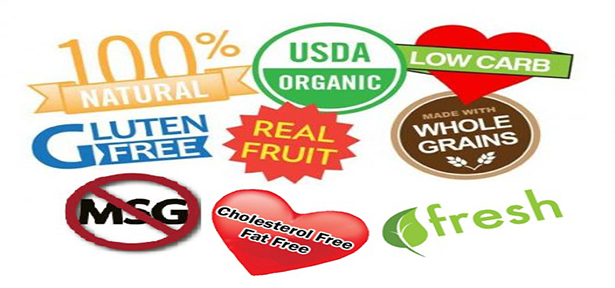As both a concerned mother and a marketing business owner, I have discovered that information on food labels is first chosen for its ability to sell products, and secondly to communicate what’s actually in the product. Many well-meaning parents are being tricked into buying food they think is safe for their families, when the opposite may be the case.
While many companies are beginning to realize consumers’ need for healthier options, and are changing their ingredients, many others are only changing their wording. The FDA, USDA, and Food Allergen Labeling and Consumer Protection Act regulate food growing, processing and labeling guidelines in the U.S. to a degree, but many terms are still misleading and confusing to the uneducated consumer. Additionally, important information is sometimes omitted from labels because it’s not required by law.
Here’s the low-down on food labeling:
Allergens
Gluten: A label marked “gluten free” does not mean it’s simply void of this grass grain. The FDA says there must be less than 20 parts-per-million in the food to earn this badge. Experts on celiac and gluten sensitivity believe this number is too high. The Gluten Intolerance Group (GFCO), and the Celiac Sprue Association’s standards are much better, at 5-10 parts-per-million. Seek out food labeled by one of these organizations to ensure the lowest ratio of gluten.
Common Food Allergens: The top eight allergens in the U.S. are wheat, soy, milk, peanuts, tree nuts, eggs, shellfish, and fish. All sources of these foods be included on packages, either in parenthesis in the food list, or at the end in bold lettering, as per the Food Allergen Labeling and Consumer Act. This is why it’s important to read the ingredient list in addition to the allergy quick-check at the bottom. Other allergens may or may not be clarified on food labels, so it’s important to know all the various terminology and sources of your particular allergy and be able to identify those on food labeling yourself. However, manufacturers are not required by law to include information about cross-contamination. If the food was processed in facility that also processes allergen foods, you may never know. Some brands are nice enough to disclose facility statements on their labels. If you don’t see one, it doesn’t mean the risk of contamination is not present.
Free-Range/ Grass Fed
These are, unfortunately, loose terms. The USDA requires only that free-range poultry (and the eggs they lay), have access to the outside. It doesn’t mean the chickens actually live happily outside, pecking to their hearts’ content. The same goes for meat animals who are grass-fed. The grass may or may not be sprayed. The animals may spend most of their days chewing grass, but they are also allowed to be fattened by grain. If you’re looking for meat free of grain and pesticides, seek out labels that say organic and 100% grass fed.
Natural/ Organic
“Natural” is not completely natural, and this is one of the most confusing labeling terms out there. First, this is not a good way to avoid GMO’s, pesticides, artificial flavoring, food coloring, or any other synthetic stuff. This term doesn’t have anything to do with how an animal was raised or a plant was grown. The FDA has no official definition of “natural” or other terms such as “100% natural,” or “All Natural.” This term loosely tends to mean that the foods have been minimally processed.
If you’re worried about the stuff mentioned above, look for labels with a “USDA Organic” badge. Real organic foods start right where they’re grown or raised. Farmers avoid using chemicals on fields and livestock are fed organic food and are not injected with growth hormones or antibiotics. A certifier visits the farm to make sure it’s operating according to the rules. You can be confident that anything labeled “USDA Organic” is free of sewage sludge, synthetics, radiation, GMO’s, and most pesticides.
You’ve Got This
Don’t get tricked. Get even by understanding labels and voting with your hard-earned dollars. I know better than anyone that brands will follow the dollars, and that’s the only way we’re going to make a change for the health of the next generation. Let’s shop smart!
(Photo found with Creative Commons Search via Google Images.)

